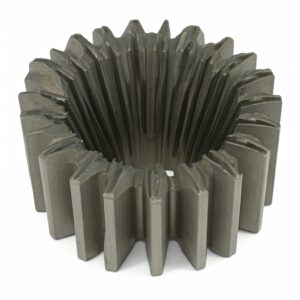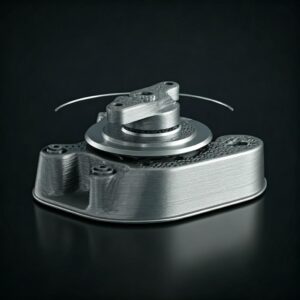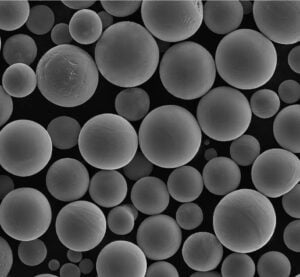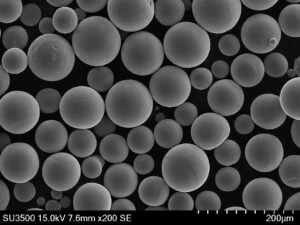How 3D Printing is Revolutionizing Racing Car Components at Le Mans
Table of Contents
1. Introduction: 3D Printing in Motorsports & Le Mans
The 24 Hours of Le Mans is one of the most prestigious endurance racing events in the world, where cutting-edge engineering and materials science play a crucial role in performance. Over the last decade, 3D printing (additive manufacturing) has emerged as a game-changer in motorsports, enabling teams to push the limits of innovation and efficiency.
From lightweight titanium suspension components to intricate heat exchangers, additive manufacturing allows racing teams to create complex, high-performance parts faster than ever before. This shift towards 3D-printed racing car components is transforming the way teams approach design, testing, and manufacturing.
2. The Role of Additive Manufacturing in High-Performance Racing
Additive manufacturing provides several advantages that are crucial for endurance racing, where durability, weight reduction, and aerodynamics make a difference between victory and failure.
Key Advantages of 3D Printing in Motorsports:
| Advantage | Impact on Racing |
|---|---|
| Lightweight Components | Reduces car weight, improving speed and fuel efficiency |
| Rapid Prototyping | Allows teams to test and refine designs quickly |
| Complex Geometries | Enables production of intricate designs that are impossible with machining |
| On-Demand Manufacturing | Reduces reliance on large inventories and shortens supply chains |
| Material Efficiency | Minimizes waste compared to traditional subtractive methods |
At Le Mans, where reliability and efficiency are paramount, 3D-printed metal parts have become indispensable. Many teams are now turning to high-performance metal powders such as titanium alloys, Inconel, and stainless steel to create stronger and lighter components.
3. Key 3D-Printed Racing Car Components
Several critical components in modern Le Mans race cars are now being manufactured using metal 3D printing. Some of the most commonly 3D-printed parts include:
A. Suspension & Steering Components
- Titanium wishbones and uprights for reduced weight and increased strength
- Aluminum steering knuckles for improved handling
- Lightweight shock absorber mounts
B. Engine and Powertrain Parts
- Turbocharger housings made from Inconel 718 for high-temperature resistance
- Lightweight pistons with optimized cooling channels
- 3D-printed intake manifolds for improved air-fuel mixture distribution
C. Heat Management Systems
- Titanium heat exchangers for better cooling efficiency
- Customized brake cooling ducts
- Exhaust manifolds made from heat-resistant superalloys
D. Aerodynamic Components
- Wind tunnel models for rapid testing
- Custom air intakes and diffusers for optimized airflow
- Carbon-reinforced 3D-printed winglets
By leveraging 3D-printed racing components, Le Mans teams can reduce weight, improve aerodynamics, and enhance durability, giving them a significant advantage on the track.
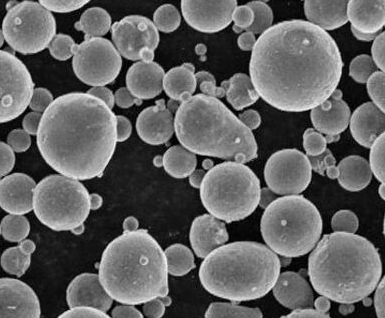
4. Benefits of 3D Printing for Racing Teams
The adoption of metal 3D printing in racing has revolutionized the way race cars are designed and manufactured. At Le Mans, where endurance and efficiency are paramount, teams are increasingly relying on additive manufacturing to improve performance and reliability.
Key Benefits of 3D Printing for Motorsport Applications
| Benefit | Impact on Racing Performance |
|---|---|
| Weight Reduction | Lighter components improve acceleration and fuel efficiency |
| Design Freedom | Enables complex geometries that are impossible with machining |
| Rapid Prototyping & Testing | Speeds up design iterations and innovation cycles |
| High Strength-to-Weight Ratio | Stronger materials like titanium improve durability without adding weight |
| Customization & Optimization | Tailored parts for specific car configurations enhance aerodynamics |
| Reduced Lead Times | Faster production cycles mean quicker part replacements |
| Material Efficiency | Less waste compared to traditional subtractive manufacturing |
Case Study: Titanium Suspension Components
A Le Mans racing team recently integrated 3D-printed titanium wishbones into their suspension system. The result? A 40% reduction in weight while maintaining the same structural integrity, leading to improved handling and reduced tire wear over long races.
5. Met3DP: A Reliable Supplier of Metal Powders for Motorsport Applications
For teams to fully leverage metal 3D printing, they need access to high-quality metal powders that ensure precision, durability, and performance. This is where Met3DP plays a crucial role.
Why Choose Met3DP for Motorsport Applications?
✅ Industry-Leading Metal Powders:
Met3DP specializes in high-performance metal powders such as titanium alloys, Inconel, and stainless steel, all of which are essential for motorsport applications.
✅ Advanced Powder Production Technology:
Using gas atomization and PREP (Plasma Rotating Electrode Process), Met3DP produces spherical metal powders with high purity, excellent flowability, and superior mechanical properties.
✅ Optimized for Additive Manufacturing:
Met3DP’s powders are tailored for Selective Electron Beam Melting (SEBM) and Laser Powder Bed Fusion (LPBF), ensuring high-density, defect-free parts for racing applications.
✅ Proven Performance in High-Stress Environments:
Met3DP’s materials are used in aerospace, medical, and automotive industries, making them ideal for extreme racing conditions at Le Mans.
Popular Metal Powders for Racing Components
| Material | Commonly Used For |
|---|---|
| Ti-6Al-4V | Suspension components, engine parts, and lightweight chassis elements |
| Inconel 718 | Turbocharger housings, exhaust manifolds, and heat exchangers |
| CoCrMo | High-performance brake components and wear-resistant parts |
| Stainless Steel 316L | Strong but lightweight structural elements |
By partnering with Met3DP, racing teams can access superior materials that enable faster, stronger, and more efficient 3D-printed components.
🔗 Explore Met3DP’s High-Quality Metal Powders for motorsport applications.
6. How Teams Use Metal 3D Printing to Gain a Competitive Edge
Le Mans is all about pushing the limits of technology, and 3D printing gives teams the edge they need to succeed.
Success Stories: How 3D Printing is Changing the Game
A. Lightweight Engine Components for Improved Performance
- 3D-printed pistons with optimized cooling channels improve heat dissipation and efficiency.
- Titanium intake manifolds enhance airflow, increasing horsepower.
B. Rapid Prototyping for Faster Development
- Teams can 3D print and test aerodynamic parts in wind tunnels within days instead of weeks.
- Quick modifications to brake ducts and cooling systems allow for real-time performance tuning.
C. On-Demand Manufacturing for Replacement Parts
- Instead of relying on traditional supply chains, teams can print spare parts on-site, reducing downtime.
- Inconel exhaust manifolds can be printed overnight for mid-season improvements.
Table: Traditional Manufacturing vs. 3D Printing in Motorsports
| Factor | Traditional Manufacturing | 3D Printing |
|---|---|---|
| Production Time | Weeks to months | Days to hours |
| Material Waste | High waste due to machining | Minimal waste |
| Design Flexibility | Limited by machining tools | Unlimited, complex geometries |
| Customization | Expensive and time-consuming | Fast and cost-effective |
| Cost Efficiency | High for low-volume parts | Lower costs for small batches |
By utilizing high-performance metal powders and advanced metal 3D printing technologies, racing teams can achieve lighter, stronger, and more efficient components in a fraction of the time.
🔗 Learn more about Printing Methods used in motorsport engineering.
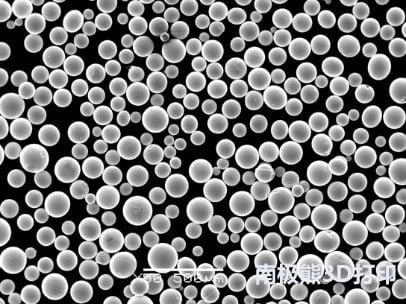
7. The Future of 3D Printing in Endurance Racing
The future of endurance racing at Le Mans and beyond is being shaped by additive manufacturing. As 3D printing technology advances, racing teams will continue to unlock new possibilities in design, performance, and efficiency.
Key Trends in 3D Printing for Motorsports
| Trend | Impact on Racing |
|---|---|
| Multi-Material 3D Printing | Combines metals and composites for enhanced performance |
| AI-Optimized Designs | Generative design creates ultra-lightweight, high-strength components |
| On-Site 3D Printing | Reduces dependency on external suppliers, enabling real-time part replacement |
| Fully 3D-Printed Engines | Future race cars may feature fully optimized, 3D-printed powertrains |
| Sustainable Materials | Eco-friendly metal powders improve sustainability in motorsports |
How 3D Printing Can Redefine Le Mans Regulations
The FIA and ACO (Automobile Club de l’Ouest), which govern Le Mans, continue to evolve regulations to accommodate new manufacturing technologies. In the near future:
- More teams will use 3D-printed titanium and Inconel parts to enhance performance.
- Hybrid and hydrogen-powered race cars will utilize lightweight 3D-printed components for efficiency.
- Aerospace-grade metal powders will become standard in endurance racing.
🔗 Discover how Metal 3D Printing is shaping the future of manufacturing.
8. How to Source High-Quality Metal Powders for Racing Components
For motorsport teams looking to integrate 3D-printed metal parts, sourcing high-quality metal powders is critical.
Factors to Consider When Selecting Metal Powders for Racing
| Factor | Why It Matters |
|---|---|
| Powder Purity | High-purity powders ensure strong, defect-free printed components |
| Particle Size Distribution | Consistent particle size improves flowability and print accuracy |
| Material Properties | Strength, heat resistance, and weight must match racing requirements |
| Production Method | Gas atomization and PREP technologies ensure high-quality powders |
| Supplier Reliability | Trusted suppliers like Met3DP provide consistent, top-tier materials |
Why Choose Met3DP for Motorsport 3D Printing?
✅ Industry-Leading Gas Atomization & PREP Technology – Ensures high-purity, spherical metal powders.
✅ Custom Alloy Development – Tailored powders for high-performance racing applications.
✅ Proven Track Record in Aerospace & Automotive – Trusted by leading engineering teams worldwide.
✅ Optimized for Additive Manufacturing – Designed for SEBM (Selective Electron Beam Melting) and LPBF (Laser Powder Bed Fusion).
🔗 Find High-Performance Metal Powders for motorsport applications.
9. FAQs: Common Questions About 3D-Printed Racing Car Parts
Q1: Why are Le Mans teams using 3D-printed metal parts?
A: 3D printing allows teams to create lighter, stronger, and more complex components that improve aerodynamics, durability, and fuel efficiency.
Q2: What materials are commonly used in 3D-printed racing parts?
A: Racing teams primarily use Titanium (Ti-6Al-4V), Inconel 718, Stainless Steel 316L, and CoCrMo, depending on the part’s function.
Q3: Can 3D printing replace traditional manufacturing in motorsports?
A: While traditional methods like CNC machining are still used, 3D printing is gradually taking over complex, lightweight, and high-performance components.
Q4: How do 3D-printed parts perform under extreme conditions?
A: Metal 3D-printed components maintain high strength and heat resistance, making them ideal for turbochargers, exhaust manifolds, and suspension parts.
Q5: Where can I source high-quality metal powders for racing applications?
A: Met3DP provides industry-leading metal powders optimized for motorsports, aerospace, and high-performance engineering.
🔗 Learn more about Met3DP’s Metal 3D Printing Solutions.
Conclusion: The Future of Racing is 3D Printed
As Le Mans and other endurance racing series continue to evolve, 3D printing will remain at the forefront of innovation. From lightweight titanium suspension components to heat-resistant Inconel turbochargers, additive manufacturing is redefining how race cars are built.
For teams looking to gain a competitive edge, high-quality metal powders and advanced 3D printing technologies are essential. With Met3DP’s cutting-edge materials and expertise, the future of motorsports is being shaped layer by layer.
Ready to explore 3D-printed racing components? Contact Met3DP today!
Explore our Metal 3D Printing Solutions for high-performance applications.
Share On
MET3DP Technology Co., LTD is a leading provider of additive manufacturing solutions headquartered in Qingdao, China. Our company specializes in 3D printing equipment and high-performance metal powders for industrial applications.
Inquiry to get best price and customized Solution for your business!
Related Articles
About Met3DP
Recent Update
Our Product
CONTACT US
Any questions? Send us message now! We’ll serve your request with a whole team after receiving your message.

Metal Powders for 3D Printing and Additive Manufacturing
COMPANY
PRODUCT
cONTACT INFO
- Qingdao City, Shandong, China
- [email protected]
- [email protected]
- +86 19116340731






